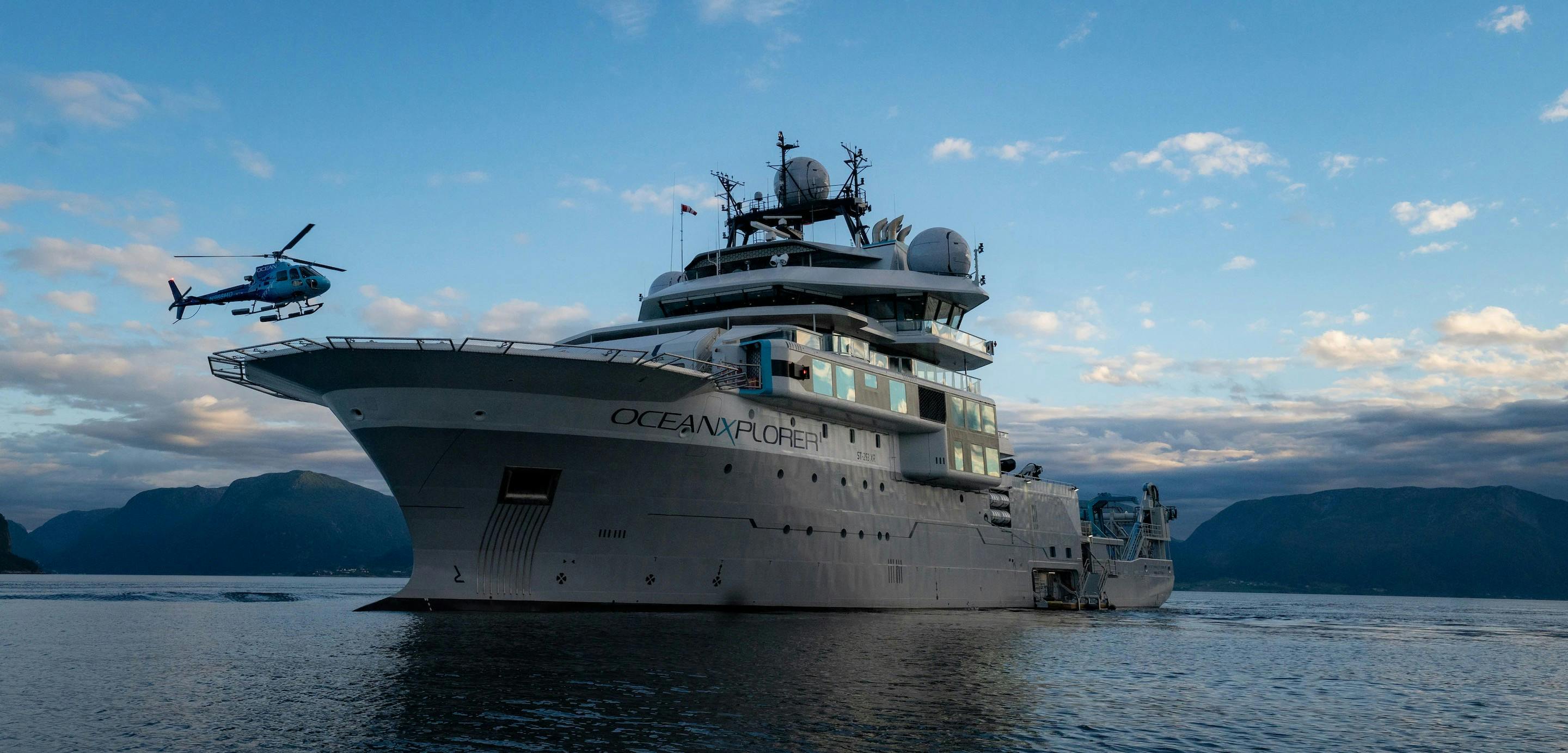
OceanXplorer
OceanXplorer
A powerful integrated research vessel unlike anything the world has ever seen, taking us to the farthest frontiers of ocean exploration.
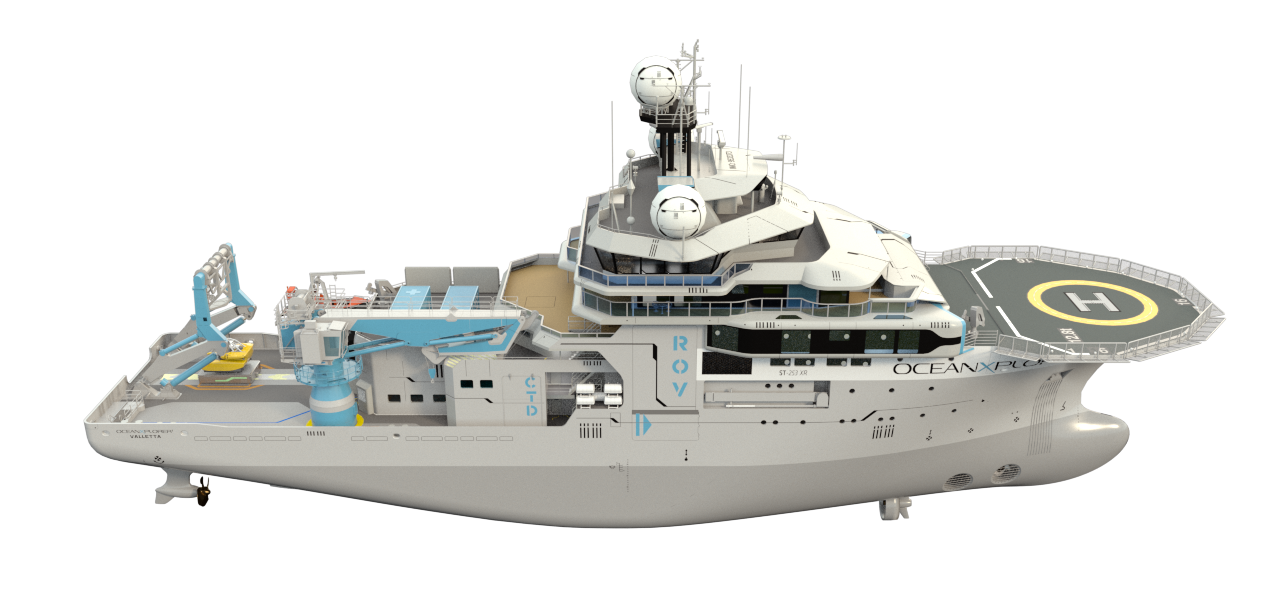
OceanXplorer’s fully-equipped “floating research institution” allows scientists from marine institutions around the globe to comprehensively characterize the ecosystem’s geological, oceanographic, and biological qualities from surface to seafloor. The ship’s advanced tools can collect all types of scientific data, and a centralized onboard system provides data analysis and visualization potential—all without needing to send data or samples to external labs for processing. Through its simultaneous launch capabilities, OceanXplorer can deploy a unique array of marine research assets to unlock the secret lives of some of the ocean’s most mysterious creatures.
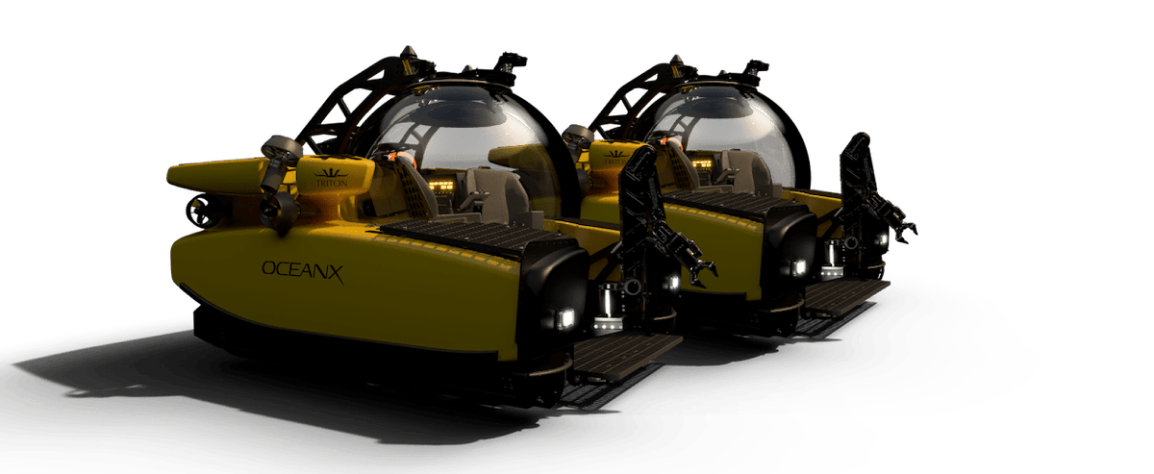
Triton 3300/3 Manned Submersible (x2)
OceanXplorers two Triton 3300/3 manned submersibles can descend to depths of 1,000m, operate up to 12hrs each, and comfortably host 3 passengers. The submersibles, aptly named Neptune and Nadir, give OceanX unparalleled access to the deep sea and the capability to document never before seen ecosystems. Both are outfitted with a full suite of sampling equipment that allows researchers to carefully collect geologic, biologic and oceanographic data from deep sea sites. These submersibles give researchers the opportunity to not only study the deep sea but also witness it firsthand.

Argus Mariner XL ROV & Mini ROV
The Argus Mariner XL 6000 m-rated 100 horsepower Workclass ROV (remotely operated vehicle) is capable of exploring nearly all of the world’s oceans. It is a rugged, maneuverable underwater robot operated remotely from the OceanXplorer and will be utilized to explore, map, and collect samples and footage of areas of the ocean where humans cannot go (e.g. samples of vent fluid from hydrothermal vents, footage and samples from underwater volcanoes, etc.). The Argus Mini 6000 complements our deep-sea exploration capabilities, helping to cover more deep-sea areas, including those that can only be reached with our tender vessels.
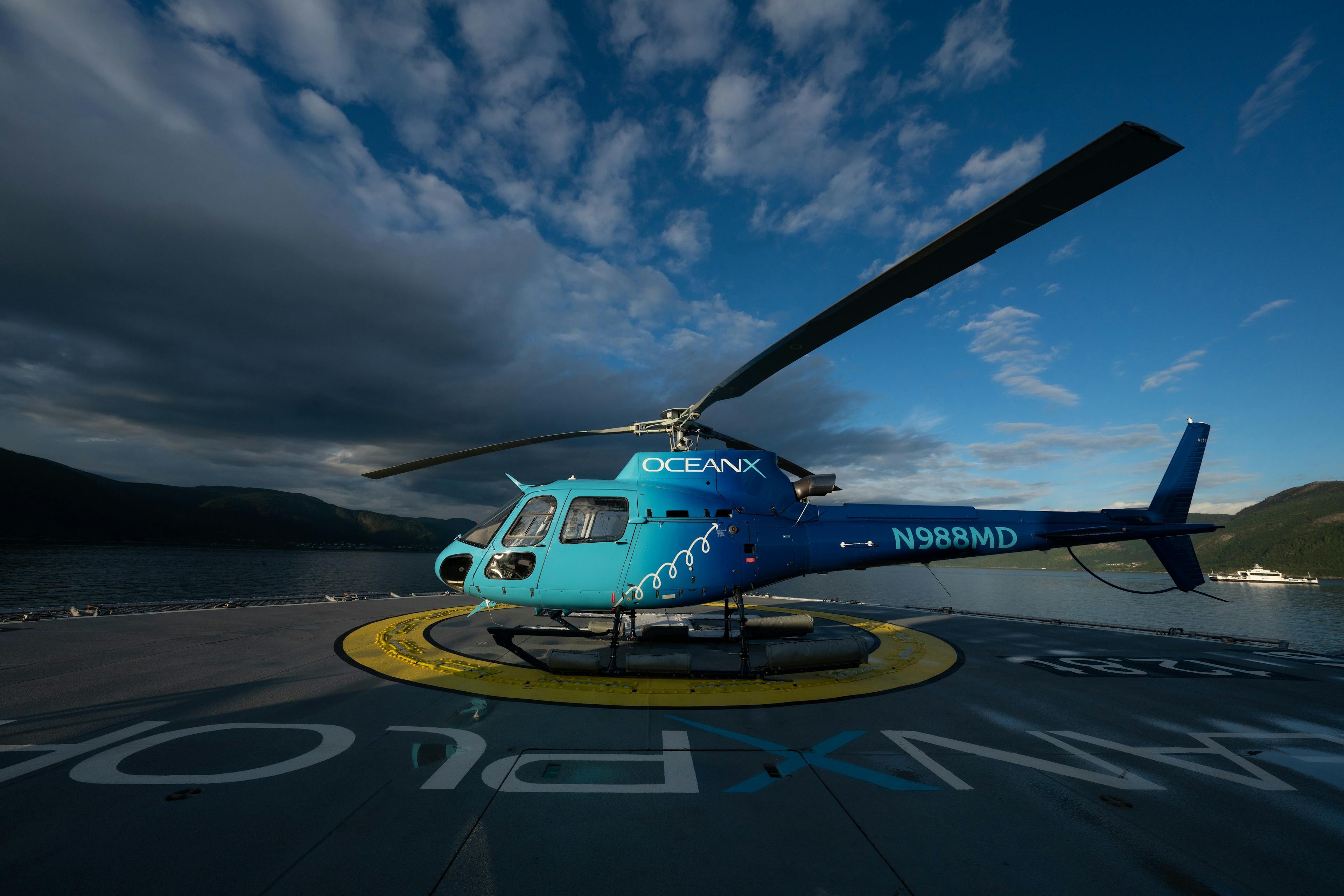
Airbus Helicopter
OceanXplorer’s onboard Airbus helicopter provides scientists added capability for aerial scouting and marine megafauna tracking, which allows for much more integrated and multifaceted surveying of a marine environment.
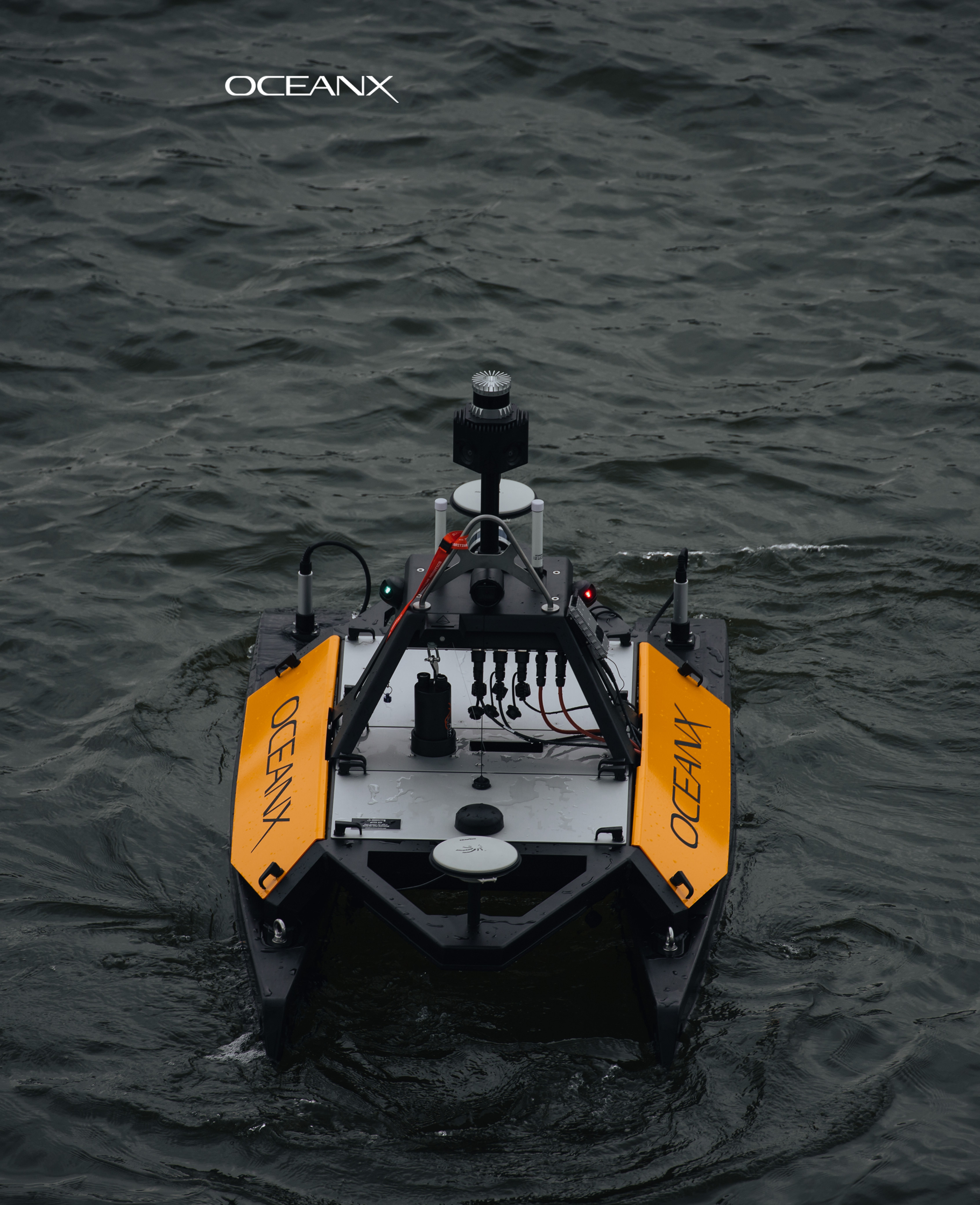
Otter Pro USV – Unmanned Surface Vehicle
The Otter USV is an autonomous surface vehicle designed to go to areas too dangerous or too shallow for the OceanXplorer to maneuver. It has a full suite of mapping sonars for the seafloor, water column, and even shallow reef systems as well as a 360 camera, LiDAR, and hyperspectral camera. The Otter allows us to access locations we can’t send humans – the shallowest reefs, the face of a glacier, and even dangerous cliffs or overhangs – to collect the data we need.
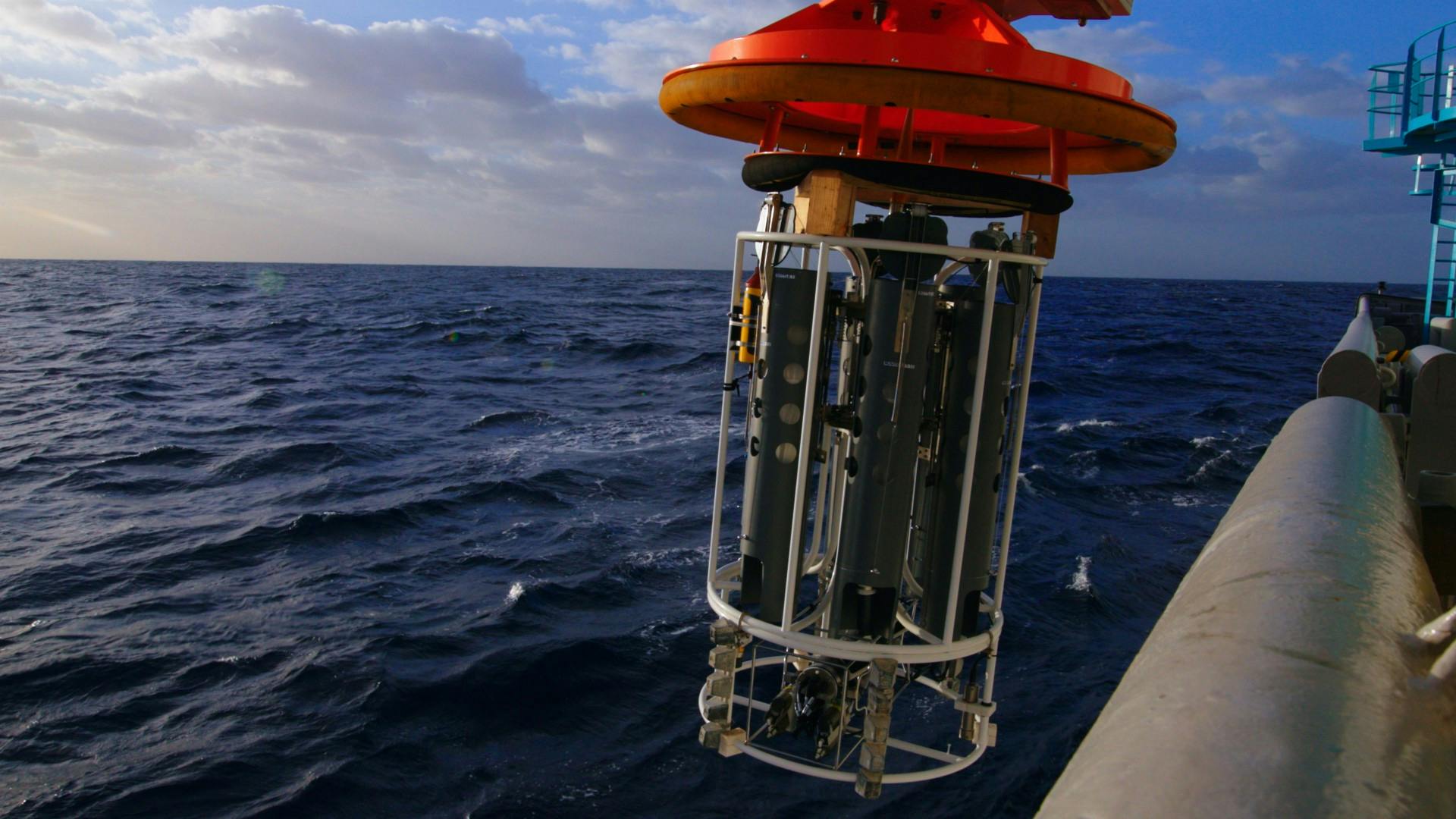
CTD Profiling System
This robust sampling tool allows scientists to measure conductivity, temperature, and depth (i.e. “CTD”) in the water column and collect water samples for analysis that give insight into the biology of an area (i.e. what are the conditions organisms face in that environment).
OceanX CTD Rosette includes a multi-channel logger with capability to measure Temperature, Salinity, and Pressure. Sound Velocity profiles can be derived from the in-situ measurements and applied directly to multibeam acquisition software or in post-processing. The rosette can support 12 niskin bottles (12L each) and deploy to a depth of 6,800m.
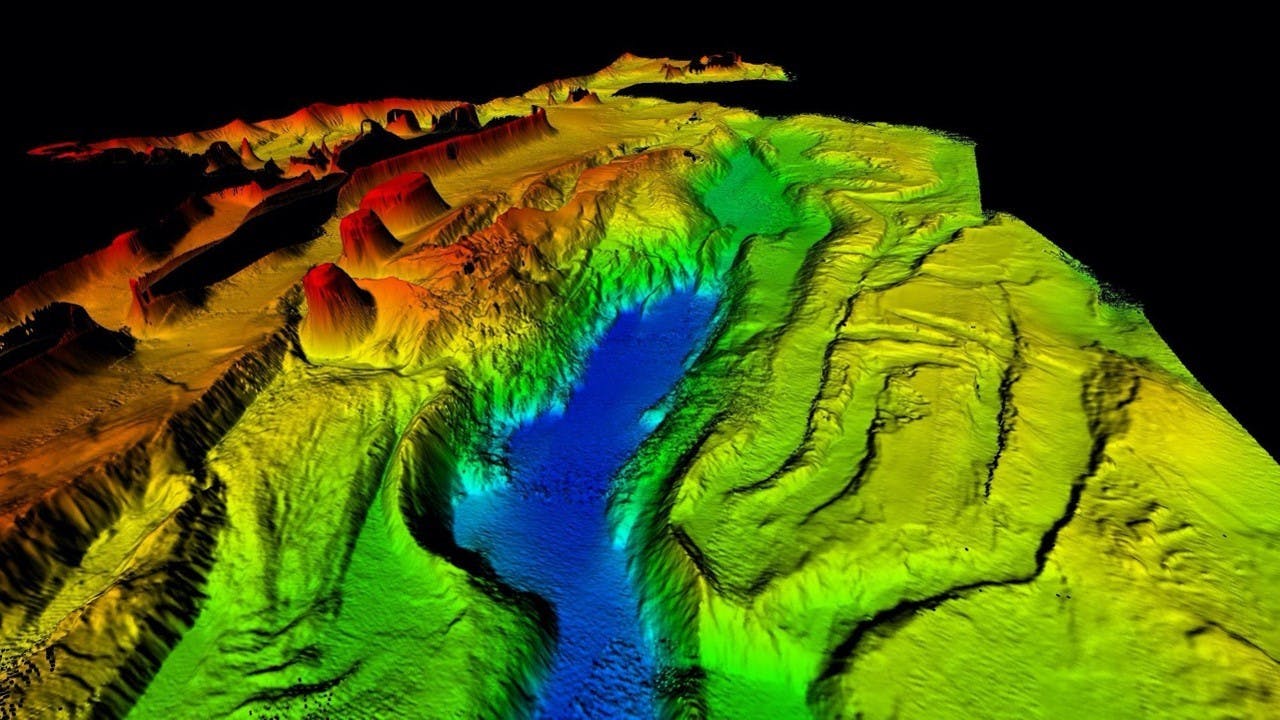
OceanXplorer Acoustic Systems
The hull of the OceanXplorer is outfitted with a variety of acoustic sampling systems that allow technicians to map the seafloor, measure ocean currents, and locate fish aggregations in real time. These systems include a Kongsberg EM304 and EM 712, Simrad EK80, two ADCP systems and a Knudsen CHIRP 3260. These acoustics allow the OceanXplorer to map the seafloor down to 8,000m in high resolution and produce 3D maps of the ocean’s bathymetry. ADCP systems help the ship navigate through rough waters and plot out data related to oceanographic parameters. The Ek80 systems map the dense aggregation of biomass (known as the Deep Scattering Layer) located at mesopelagic depths and help technicians understand the movement patterns of this phenomenon.
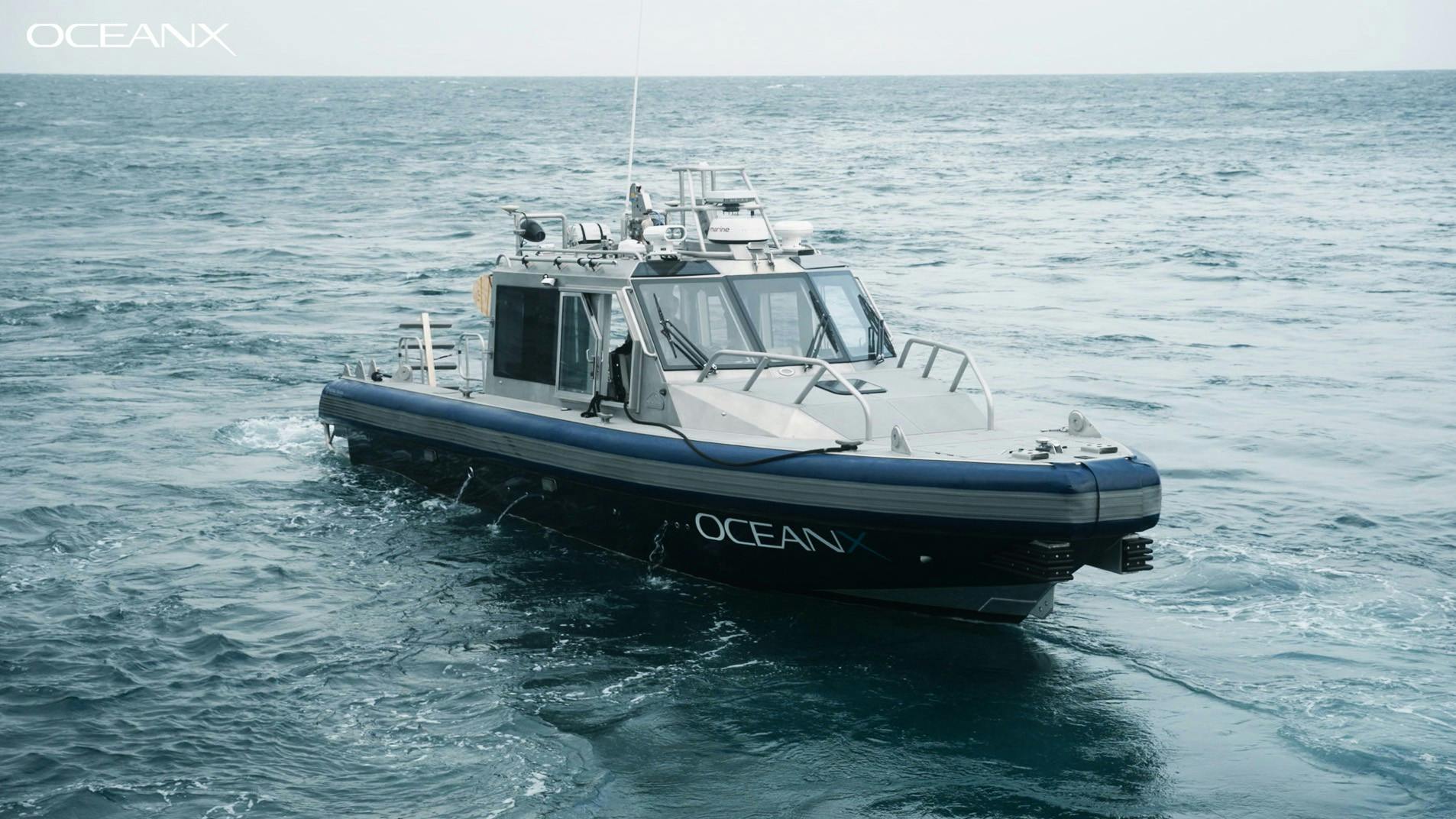
Metal Shark Acoustic systems
Metal Shark is a 38-foot research tender launched and recovered from RV OceanXplorer. Attached to the vessel’s hull is a Kongsberg EM2040C Multibeam Echosounder. Also featured is a pole-mounted split-beam sonar for EK80 (bioaccoustic) surveys. Metal Shark is used for habitat and bathymetry mapping objectives between 300m and 20m water depth. Metal Shark bathymetry mapping operations are driven by the need for bathymetry in depths ranging between 200m and ~20m. A full technical survey team on board expertly handles mission and survey planning, data acquisition, and processing/visualization to create 3D maps of newly explored terrain.
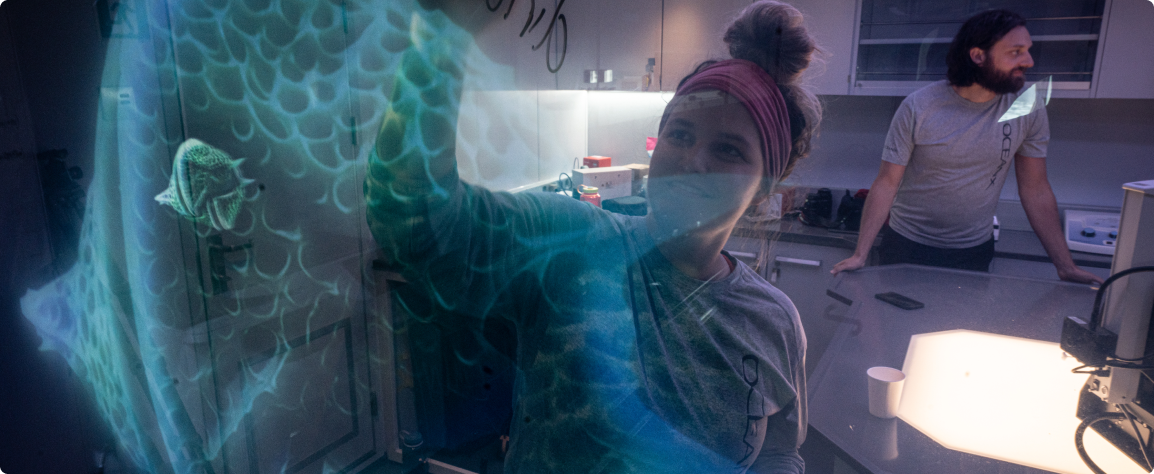
Dry Labs 1-3 and Wet lab
All four labs are equipped with everything a scientist needs to study the ocean from the largest megafauna to the smallest microbes. From pipette tips to PCR plates OceanXplorers labs possess a comprehensive inventory of items designed for microbiology assays and physiological experiments. eDNA (Environmental DNA) collected from the ocean can be analyzed using on board filtration systems, processed using DNA extraction kits, and sequenced using either MinIONs or a PromethION system. The wet labs are equipped with water tables for storing aquatic organisms collected from the depths and a walk-in freezer key for keeping samples preserved.
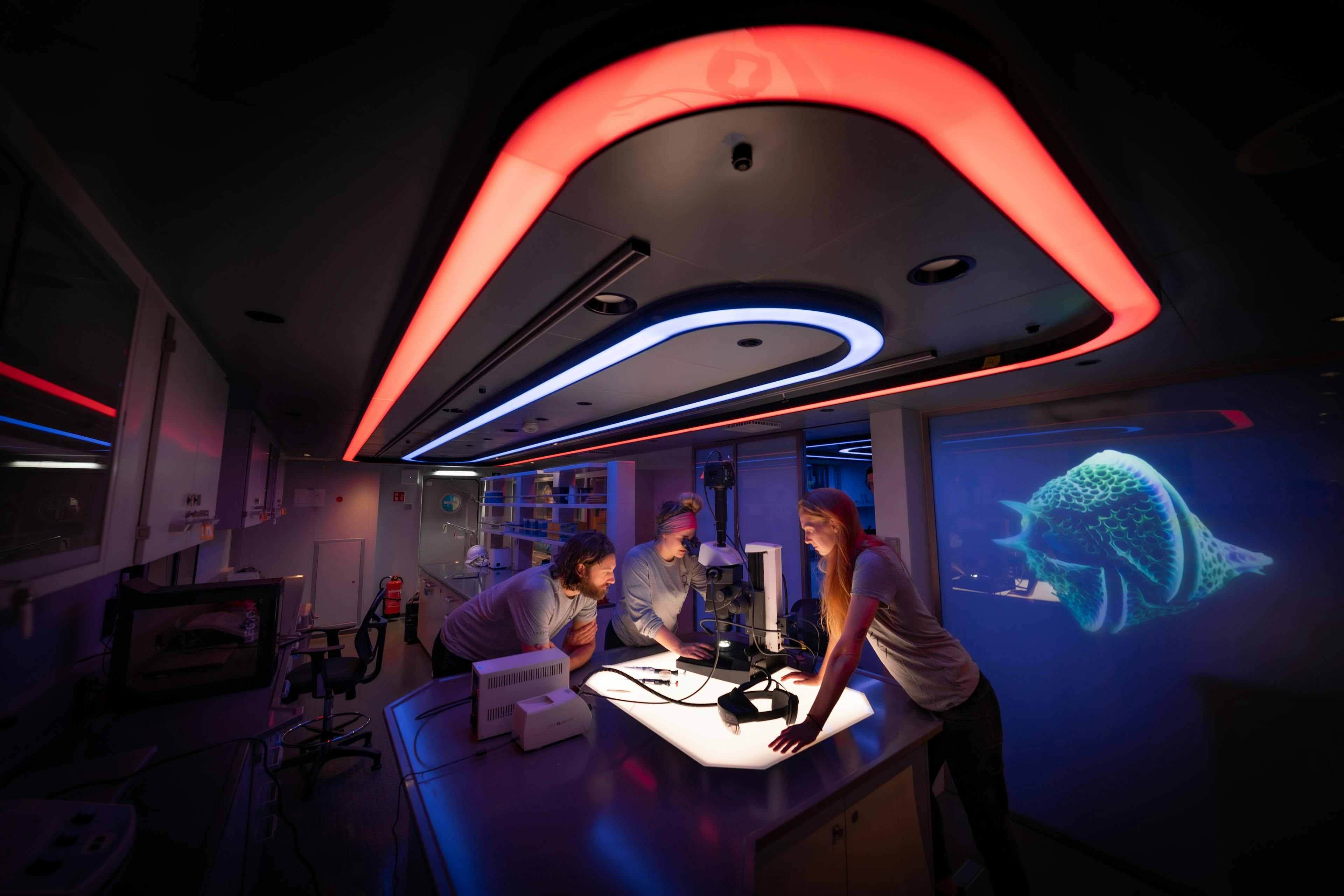
Centralized Data Platform
OceanXplorer’s OpenVDM platform can be viewed as the central nervous system of the ship: all of the instruments deployed from the vessel transmit information that serves to build the brain, nerves, and nerve clusters that are then synthesized in mission control.
